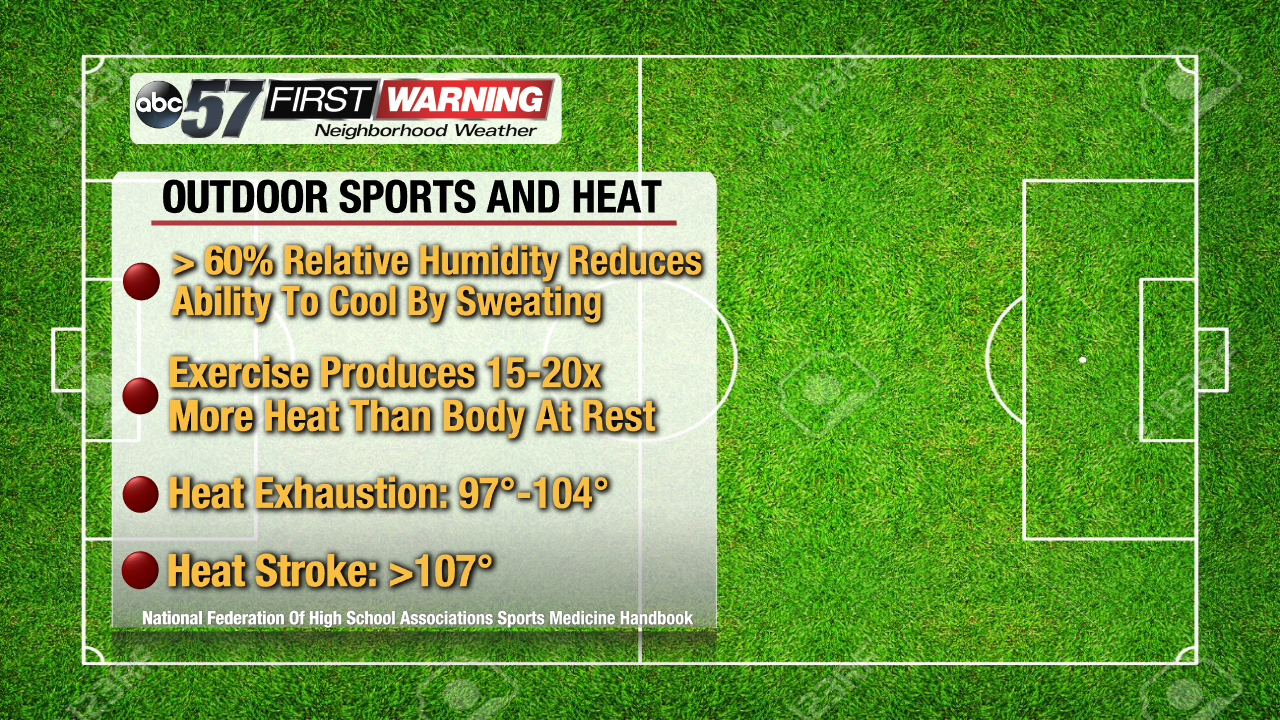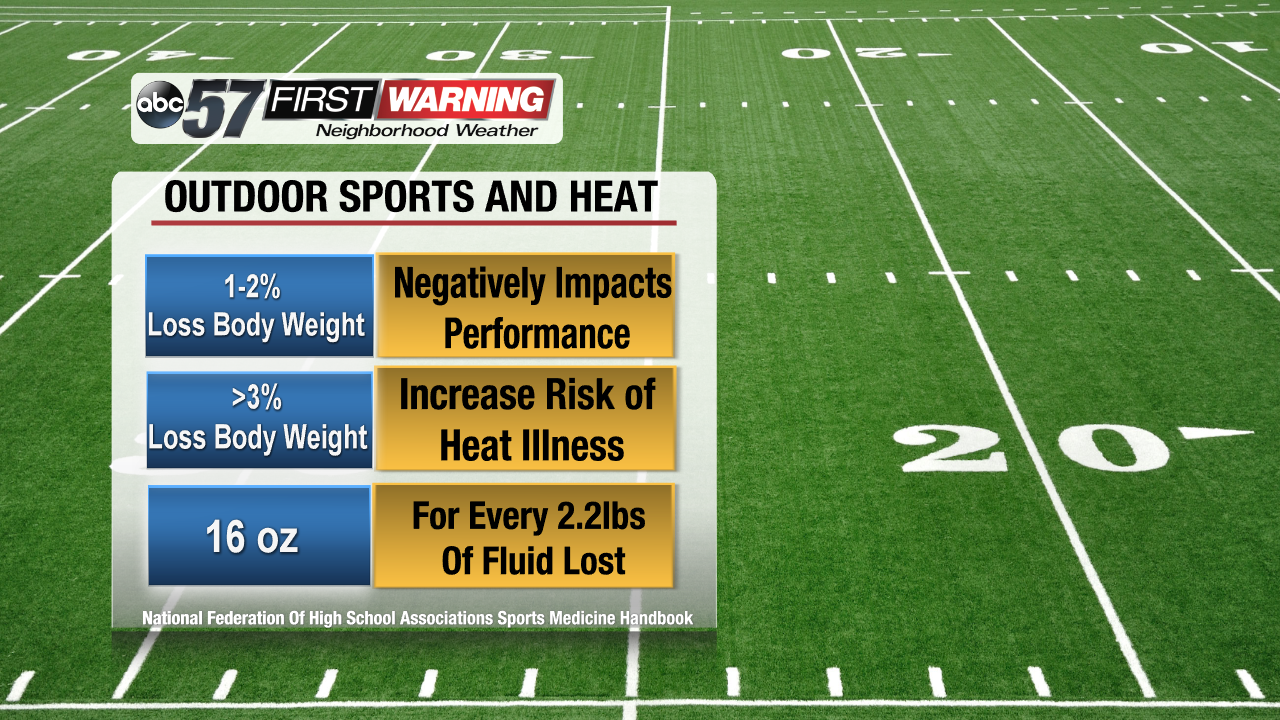Keeping athletes safe from the heat
Fall sports usually take an aggressive start in mid-August, and athletes may easily forget the impacts the weather can have on their bodies.
With relative humidity above 60%, the body cannot cool down effectively by sweating, which could lead to overheating. Add this on to the fact that the body heats up 15-20 times more while exercising than at rest, and it can be dangerous. Heat exhaustion occurs when the body core temperature is anywhere from 97 to 104 degrees, and heat stroke occurs when the body core temperature is 107 degrees or higher.
It is also important to stay adequately hydrated, since athletes lose so much water through sweat while on the field. Once you feel thirsty, you are already dehydrated. When the body loses 1-2% of its body weight in water, which around 3 pounds in a 180 pound male, it can negatively impact performance. If the body loses 3% or more body weight in water, which is around 5 pounds in a 180 pound male, that can increase the risk of heat illness. Make sure to keep your athletes hydrated before, during and after practice or games. The body needs 16 oz of water for every 2.2 pounds of fluid lost.
















